
Last Updated on
“What a f***in’ cool lookin’ rifle.” Sgt. Chuck Pruitt’s sentiment echoed off the concrete walls of our Camp Stanley storage bunker as we were preparing a number of weapons for an upcoming range session. I looked over at the CIOR (Military Pentathlon) team locker and saw him heft a sleek, black, self loading rifle that clearly wasn’t an AR-15/M16. The included pamphlet answered the question on both our minds: Beretta AR70/90.
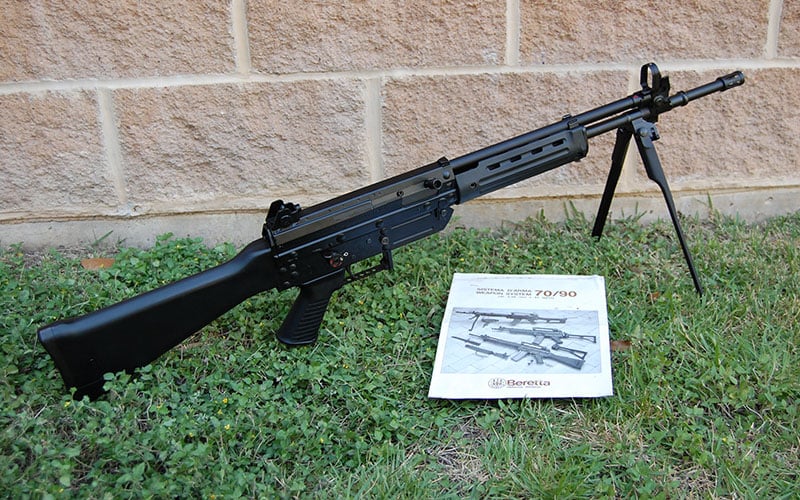
Unfortunately, the sparse little tech sheet didn’t provide much detail. I uttered a question but knew the response before I heard it: “All I know is that we need to go shoot it.” That is the sort of good answer I’d expect from “Chuckles” but I’m sure the reader will want more details. Let me fill you in.
Beretta first began development of a new assault rifle chambered for the 5.56mm NATO cartridge in the late ‘60s. Called the AR-70/223 it was fielded by select Italian units and several foreign armies four years later. Variants on the design include a standard assault rifle, carbine, and squad automatic with a heavy, quick detach barrel. A decade later the Italian army decided to replace their BM59s. Beretta entered the fray with upgraded versions of their 70/223 series in 1985. These upgrades eventually won the trials and were officially adopted in 1990 as the AR-70/90.
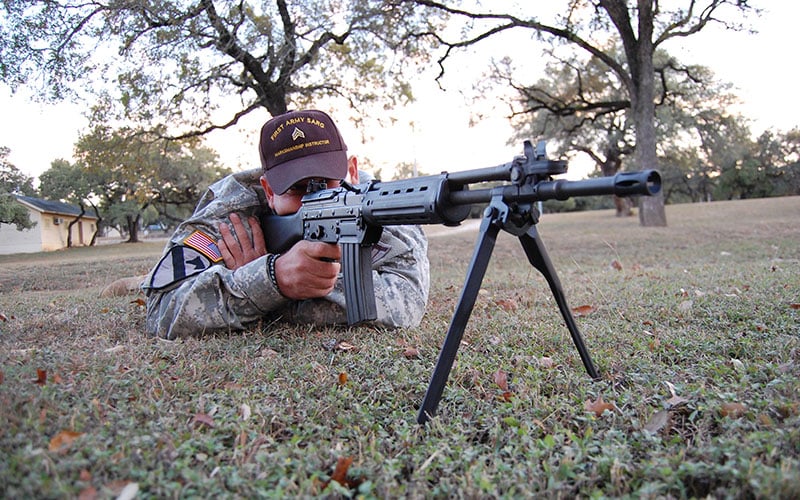
As for design specifics, the AR-70/90 is a gas operated, magazine fed, select fire. The receiver is a modern two piece sheet steel stamping connected by two cross pins fore and aft. Like the AR-15 series, take down is affected by pushing out the rear pin and hinging (or completely separating) the receiver halves. The rifle sports a conventional long stroke gas system. An above-barrel gas piston rod is locked to the bolt carrier via the cocking handle and the return spring surrounds the gas piston. The gas block features a two position regulator (for normal and adverse conditions) and gas cutoff integrated with the grenade sight. When raised into the firing position this sight automatically closes the gas port.
Similar to contemporary designs, the chrome-lined barrel is fixed to the receiver using a threaded barrel nut allowing an armorer to more quickly replace the barrel without extensive headspace adjustments. The rotating bolt features two massive lugs which locked into the barrel sleeve.
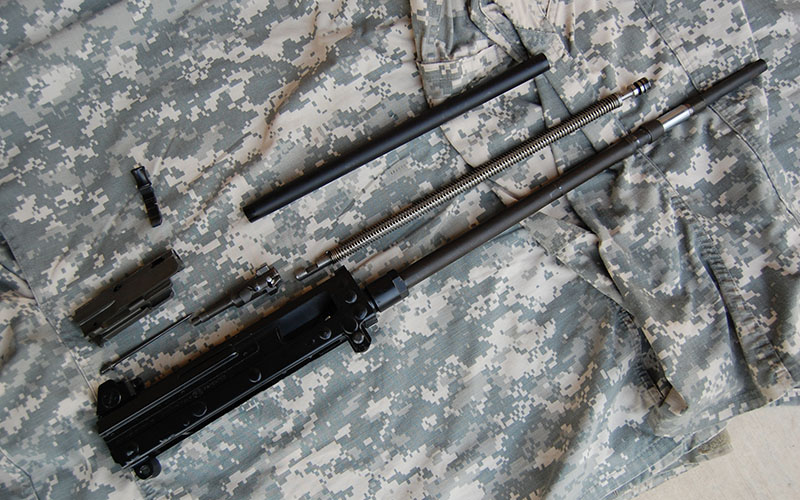
The AR-70/90s selector is truly selective, allowing for semi-auto, three round burst and fully automatic settings with a switch on both sides. The weapons feeds 5.56 NATO cartridges from STANAG M16-type magazines which lock in and release with an ambidextrous magazine release located on either side of the housing in the lower receiver. A bolt hold open activates after firing the last round or can be manually operated from the left side of the receiver above the magazine housing.
Iron sights are similar to the M16A1 featuring a hooded, elevation-adjustable front post mounted atop the gas block and a dual, windage-adjustable rear aperture with peep sights marked for 250 and 400 meters. The top of the upper receiver is fitted with a NATO-standard scope/accessory rail and a detachable carry handle with see-through base is included. A fold down bipod tucks neatly under the fore end. It is a bit flimsy but completely usable while remaining unobtrusive and weightless when folded up.
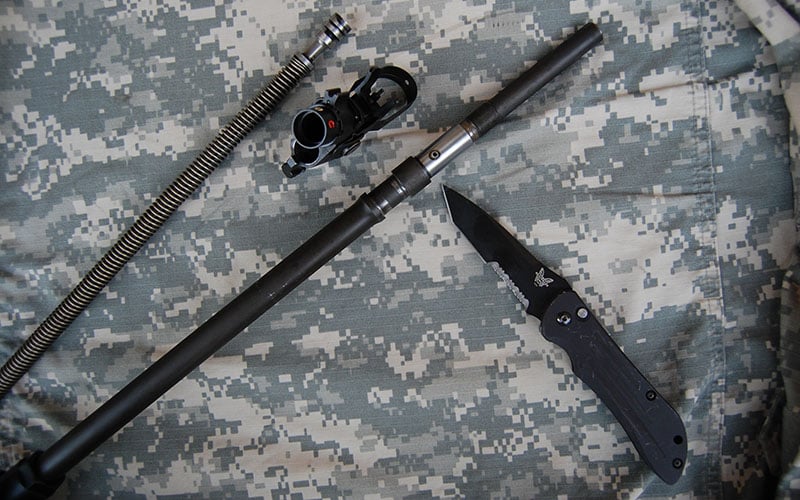
Shooting impressions
Our initial range session took place on Zero Range C, Camp Bullis, Texas. While primarily used only to 25 meters the berm there is deep enough to allow shooting to 75 yards. During the same range session we were testing a batch of new M249s and were pleased to find that a comparison to the AR-70/90 proved favorable. While it isn’t a substitute for an automatic rifle, much less a light machine gun, the AR70/90 shot well on both scaled target and full distance automatic rifle courses out to 400 meters. Shooting as an automatic rifle proved a satisfying surprise, even though the AR70/90 is about half the weight. Off the bipod the AR70/90 is even more finicky than the M249, however, good gunners found that they could control three round burst well enough to maintain consistently-placed sub-four mil cones. One thing that helped was using the burst setting instead of full auto, allowing the gunner to focus more on good position and followthrough and not modulating the trigger to control the burst.
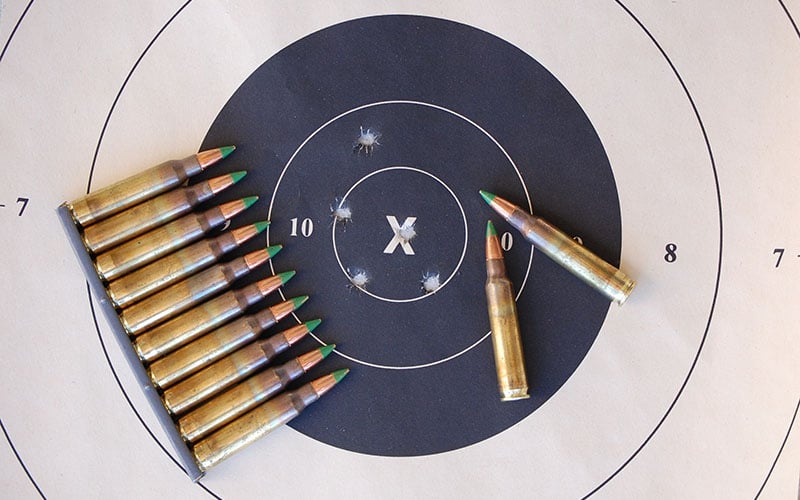
Of course, the AR70/90 was intended to be issued as a rifle. As such, it is slightly more nimble than a standard M16. The standard controls are ambidextrous, the comb is closer to the line of sight and the stock is more ergonomically shaped for a solid weld. Even though I’ve handled the M16 much longer I found the AR70/90 came up to the eye easier. The front sight appears wider and subtends a few more minutes but acceptable for its intended purpose. The rear sight lacks the range and ease of adjustment found on A2/A4 rear sights, however, these provisions are lost on most troops. Marksmen appreciate and can well use what amounts to a match sight but few soldiers are so trained and a simple “set and forget” is probably better for mass issue.
A cool rifle, indeed!
| AR-70/90 | Technical Specifications |
|---|---|
| Caliber | 5.56x45mm NATO (SS109/M855) |
| Length | 998 mm |
| Barrel length | 450 mm |
| Weight, empty | 4.0/7 kg |
| Magazine capacity | 30 |
| Rate of fire | 670 rounds per minute |
| Effective range | 500 meters |




Leave a Reply